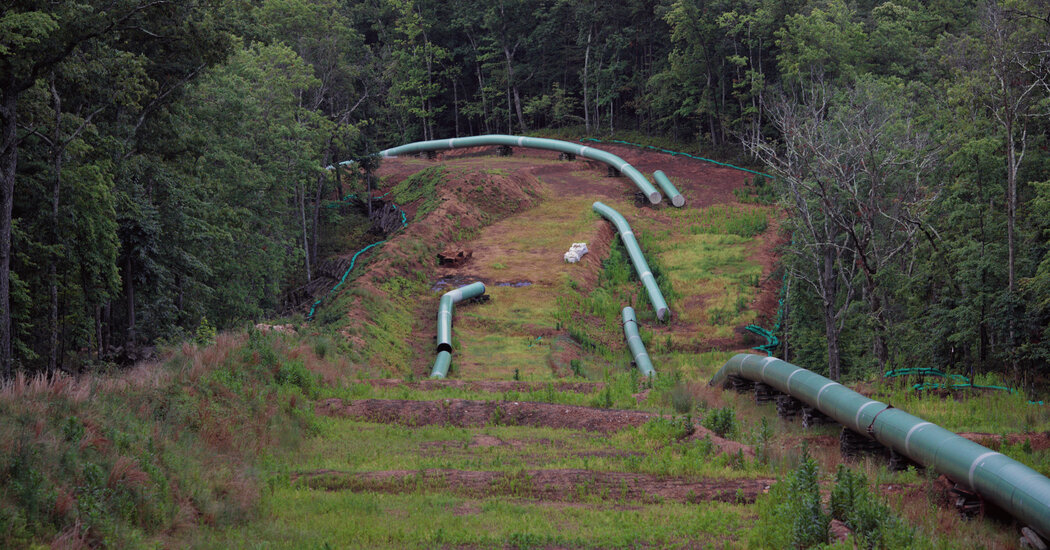Phosphorus in Enceladus’s ‘Soda Ocean’ Adds to Prospects for Life
Enceladus — the sixth-largest of Saturn’s 146 moons — has a liquid ocean with a rocky floor under its bright, white and frosty surface. Ice volcanoes spew frozen grains of material into space, generating one of the many rings circling the planet.
Now, a team of researchers has discovered that those icy grains contain phosphates. They found them using data from Cassini, a joint NASA-European orbiter that concluded its study of Saturn, its rings and moons in 2017. It is the first time phosphorus has been found in an ocean beyond Earth. The results, which add to the prospect that Enceladus is home to extraterrestrial life, were published on Wednesday in the journal Nature.
“We weren’t expecting this. We didn’t look for it,” said Frank Postberg, a planetary scientist at the Free University of Berlin who led the study. He described the realization that they had found phosphates (chemicals containing the element phosphorus) as a “tantalizing moment.”
With the discovery of phosphorus on the ocean world, scientists say they have now found all of the elements there that are essential to life as we know it. Phosphorus is a key ingredient in human bones and teeth, and scientists say it is the rarest bio-essential ingredient in the cosmos. Planetary researchers had previously detected the other five key elements on Enceladus: carbon, hydrogen, nitrogen, oxygen and sulfur (the last of which has been tentatively detected).
Earlier research indicated that phosphorus should be scarce on extraterrestrial ocean worlds, which could hold back life from forming elsewhere in the solar system or galaxy.
But on Enceladus, the researchers found the “exact opposite,” Dr. Postberg said. Rather than having a lack of phosphates, he said, its icy sea was “enriched compared to Earth’s oceans by a factor of 1,000 or so.”
Dr. Postberg and his colleagues reached this conclusion by performing an in-depth survey of 345 ice grains that Cassini studied as it flew through Saturn’s “E-ring,” which is formed by Enceladus’s emissions. They measured the composition of dust puffs arising from the collisions of these grains with the metal plate of an instrument on the spacecraft, the Cosmic Dust Analyzer. Nine of the icy particles, they found, had molecular masses that hinted at the presence of phosphates.
To ensure they weren’t misinterpreting Cassini’s readings, they set up a series of experiments in the lab, trying out different states and concentrations of phosphorus. “And after doing many measurements, we hit the bull’s-eye,” said another of the study’s authors, Fabian Klenner, who is now an astrobiologist at the University of Washington. “We found one perfect match with the data from space.”
But the researchers still couldn’t explain how Enceladus had such high concentrations of phosphates in its ocean. Some of the study’s researchers investigated this at the Tokyo Institute of Technology by simulating the geochemical interactions between the ocean’s water and its rocky floor.
They found answers in the alkaline waters of Enceladus, which are rich in carbonates. “You could call it a ‘soda ocean,’” Dr. Postberg said.
Phosphorus naturally occurs most often in solid minerals, such as those found inside asteroids and comets. “And if it’s locked up in a rock, it’s hard to harvest for life,” Dr. Postberg said, because it needs to be soluble to be used biologically. “But we find that this soda water can dissolve phosphates really well.”
Mikhail Zolotov, a planetary geochemist at Arizona State University who wrote a perspective article on the study for Nature, was unsurprised by this explanation. “It was clear before, by studies of soda lakes on Earth, that we would expect high amounts of phosphorus in any natural soda lakes,” he said.
Beyond Enceladus, Dr. Postberg says, this discovery may indicate that other ocean worlds in the outer solar system, like Jupiter’s moon Europa or the dwarf planet Pluto, are rich in phosphates — and thus potentially habitable.
He and fellow researchers hope to analyze a larger sample of Cassini data to strengthen their results. But a definitive search for life on Enceladus will take another mission that is a decade or two away, if it ever gets approved.
“We don’t know yet if this very habitable place is actually inhabited,” Dr. Postberg said. “But it is certainly worth looking.”


